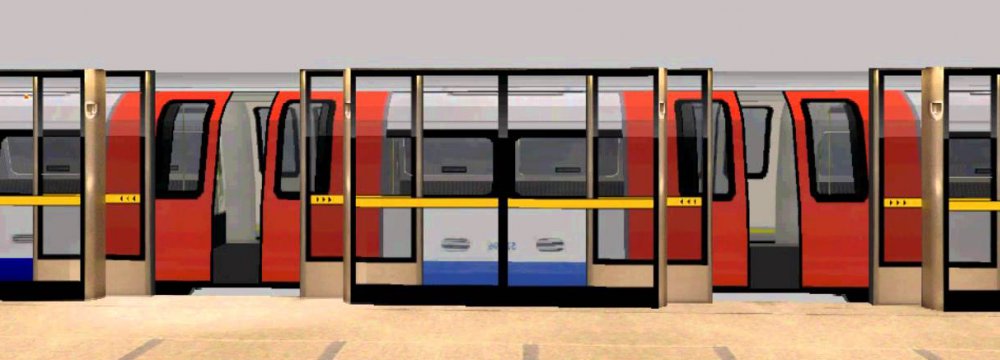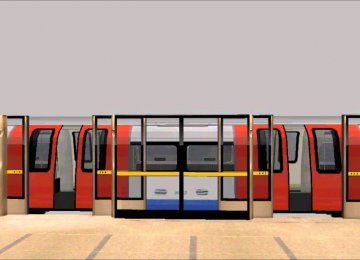Members of the Tehran City Council earlier this month approved a plan to install Platform Screen Doors (PSD) or glass walls at metro stations, and the Tehran Municipality is responsible for implementing the project.
The glass walls shield platforms from tracks with doors that open in sync with that of the subway coaches. The doors are thought to be a solution to prevent accidental falls on the subway tracks.
Fatal incidents in subway stations, including accidental deaths due to negligence and suicide attempts, have caused concern for over a decade now. Warning announcements and signs are apparently ignored by the public either for lack of attention or the magnitude of the crowd at the platforms especially during rush hours. Therefore, the idea of a shield to block the entrance to risky areas at stations was proposed by experts.
Mohsen Sarkhu, a member of TCC Civil Service Commission, had earlier said the PSDs not only help prevent suicide attempts but also garbage and other debris from falling onto the tracks. Inflammable material can start fires when it comes into contact with the electric third rail. (A third rail is a method of providing electric power to a railway train, through a semi-continuous rigid conductor placed alongside or between the rails of a railway track.) “By keeping trash off the tracks, time and money spent on sending workers every day to clear the debris, can be saved”.
Based on reports, studies on the PSD project have already been undertaken but the delay in implementation was due to lack of funds and the years of international sanctions that were lifted in January after Iran and the six world powers signed a nuclear accord.
“Importing the required technology is fraught with challenges but domestic knowledge-based organizations have been called on to develop the facilities which would help in saving costs,” said Reza Taqipour, the TCC spokesman. He, however, added that the equipment till then has to be acquired from abroad.
It is said that installing PSDs at all subway stations will cost around one trillion rials ($27 million).
But Ahmad Donyamali, head of the TCC Civil Service Commission, says, “We must put up the safety barriers if we can prevent even one person from getting killed at the overcrowded stations.”
Nonetheless, the financial burden is apparently too heavy for the TM to be undertaken at one go. Therefore, intersections where the chances of accidental falls are higher due to the rush have been given priority.
“We are trying to increase the budget of the Tehran Metro and allocate funds to install the protective systems,” said Taqipour, YJC reported.
The municipality has also been tasked to improve its financial resources so as to equip the increasingly crowded stations without further delay.
Opinion Divided
Some officials maintain that there is no haste to install such costly equipment. “Many European countries do not have PSDs at subway stations,” says Ehsan Moghaddam, spokesman for the metro company.
London, a giant city, does not have such facilities; several subway stations in Germany are not even equipped with escalators.
While the PSD installation is expensive, the safety doors can also be risky if people in their haste to get in are trapped between the doors and the train coach. However, the chances of such incidents occurring are rare and depend largely on door design.
Meanwhile, the urban authorities have initiated a campaign to foster a culture of safety alertness. Educative programs are currently under trial at two stations, the Persian daily Shahrvand reported.
In Taleghani station in Central Tehran, yellow chains attached to red bollards are lined along the platform to keep people away from the platform edge. There are openings in sync with train doors to allow people to get on and off. At Darvazeh Dowlat station, the junction after Taleghani, warning stickers inform people of the possible dangers of reckless behavior.
Moghaddam says these measures help alert commuters and are aimed at raising awareness. Similar measures will be taken at other stations.
But the effectiveness of such measures will be determined only if they are trialed at busy stations, maintain critics, but Moghaddam argues that “the best results are derived from assessments made in stations with average number of commuters.”
He also asserted that the stickers and bollards will not prevent suicide attempts but help stop accidental deaths or injuries.
“A person who intends to commit suicide will naturally pay no attention to the warning signs.”






Add new comment
Read our comment policy before posting your viewpoints